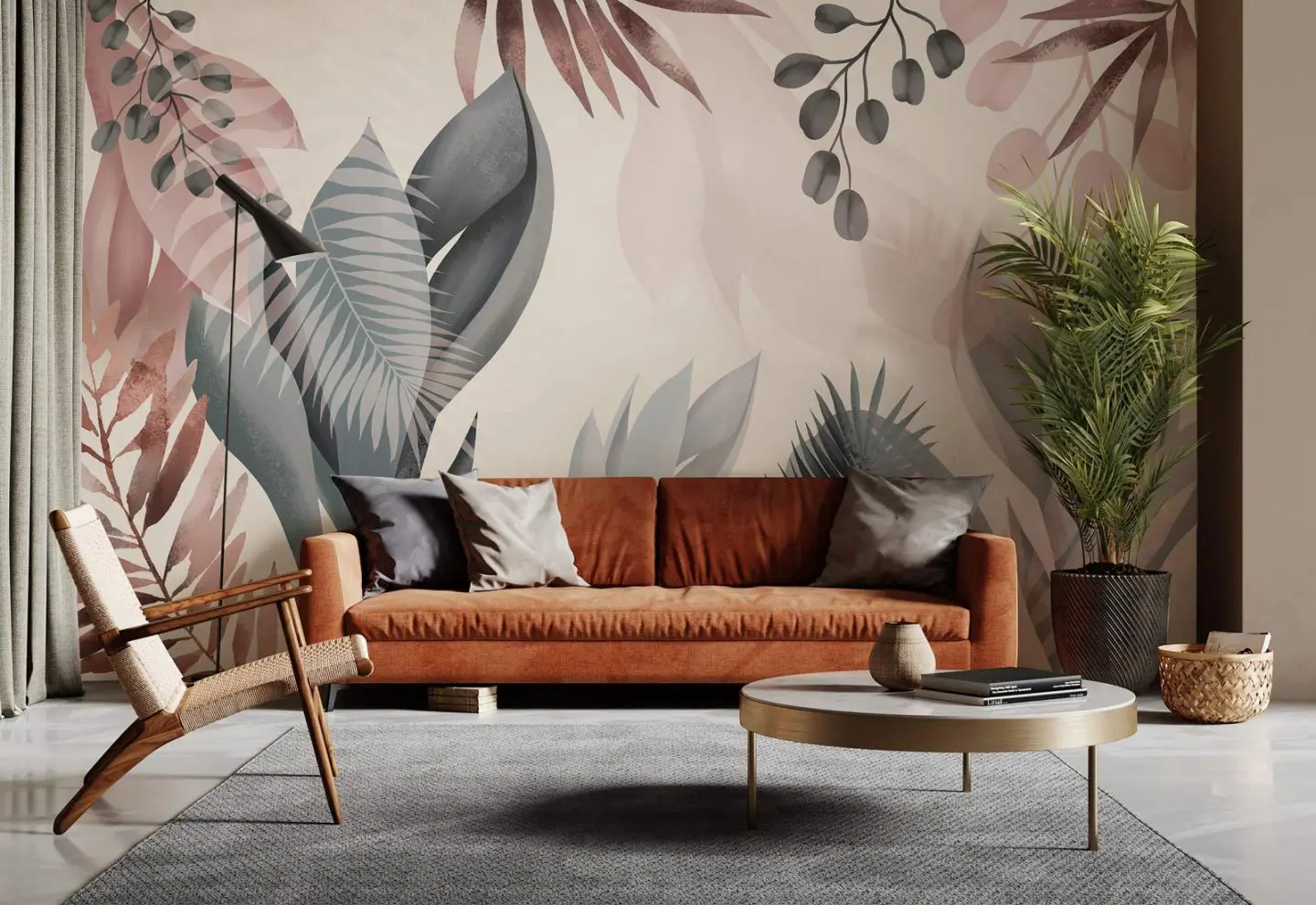Choosing the right wallpaper can dramatically transform the look and feel of any room. It’s a decision that requires careful consideration of patterns, colors, materials, and maintenance. This guide offers comprehensive tips on selecting the best wallpaper for your space and how to maintain it to ensure lasting beauty and durability.
Floral peel and stick wallpaper offers a quick and stylish way to enhance any room. Easy to apply and remove, it features beautiful floral patterns that add a touch of nature and elegance. Ideal for renters or those looking to update their decor without the commitment of traditional wallpaper.
Choosing the Best Wallpaper
Understand Your Style
Identify Your Aesthetic
Before selecting wallpaper, it’s essential to understand your personal style and the overall aesthetic you want for the room. Are you drawn to modern, minimalist designs, or do you prefer traditional, ornate patterns? Identifying your aesthetic will help narrow down your choices.
Consider the Room’s Purpose
The function of the room plays a crucial role in wallpaper selection. For instance, a calming, neutral design might be best for a bedroom, while a vibrant, energetic pattern could be ideal for a living room or home office.
Selecting the Right Pattern
Scale of Pattern
The size of the pattern should complement the room’s dimensions. Large patterns can make a small room feel even smaller, while small, intricate designs can get lost in a large space. Balance is key to achieving the desired visual impact.
Color Coordination
Choose colors that harmonize with the existing decor. Consider the color of your furniture, flooring, and other elements in the room. Wallpapers with complementary colors can create a cohesive look, while contrasting colors can add dynamic interest.
Choosing the Right Material
Vinyl Wallpaper
Vinyl wallpaper is durable and easy to clean, making it suitable for high-traffic areas like kitchens and bathrooms. It’s also available in a wide range of patterns and textures.
Non-Woven Wallpaper
Non-woven wallpaper is breathable, making it a good choice for preventing mold and mildew in humid areas. It’s also tear-resistant and easy to install and remove.
Paper Wallpaper
Paper wallpaper offers a classic look but is less durable than other materials. It’s best suited for low-traffic areas and should be applied with care to avoid damage.
Evaluating Light and Space
Natural Light
Consider the amount of natural light the room receives. Darker wallpapers can make a room feel cozy, but they may also make it feel smaller if there’s limited light. Lighter wallpapers can brighten up a space and make it appear larger.
Room Size
The size of the room should influence your wallpaper choice. Bold, large-scale patterns can overwhelm a small room, while subtle patterns or solid colors can help open up the space. In larger rooms, you have more flexibility to experiment with different designs.
How to Maintain Your Wallpaper
Regular Cleaning
Dusting
Dust your wallpaper regularly using a soft, dry cloth or a duster. This prevents dust buildup and keeps the wallpaper looking fresh. For textured wallpapers, a vacuum with a brush attachment can be effective.
Spot Cleaning
For small stains or marks, use a damp cloth with a mild soap solution. Gently blot the stain instead of rubbing to avoid damaging the wallpaper. Always test the cleaning solution on an inconspicuous area first.
Handling Humidity
Use a Dehumidifier
In rooms with high humidity, such as bathrooms and kitchens, use a dehumidifier to reduce moisture levels. This prevents mold and mildew from forming behind the wallpaper.
Proper Ventilation
Ensure proper ventilation in all rooms, especially those prone to humidity. Exhaust fans in bathrooms and kitchens can help maintain a suitable environment for wallpaper.
Avoiding Damage
Protect from Sunlight
Prolonged exposure to direct sunlight can cause wallpaper colors to fade. Use curtains, blinds, or UV-blocking window films to protect your wallpaper from sunlight.
Preventing Physical Damage
Be mindful of furniture placement and movement to avoid scraping or tearing the wallpaper. Using bumpers on furniture edges can help prevent accidental damage.
Repairing Wallpaper
Fixing Peels and Lifts
If you notice any peeling or lifting edges, reapply adhesive to the affected area promptly. Use a wallpaper seam roller to press the edges firmly back into place.
Patching Tears
For small tears, you can use a wallpaper patch kit. Cut a piece of wallpaper that matches the pattern, apply adhesive, and carefully place it over the tear. Smooth it out to blend seamlessly with the surrounding area.
Long-Term Care
Regular Inspection
Periodically inspect your wallpaper for any signs of damage, moisture, or wear. Early detection and repair can prevent more extensive damage and prolong the life of your wallpaper.
Refreshing the Look
Over time, you may want to refresh the look of your wallpaper. Consider using decorative accents like borders or murals to give the room a new look without replacing the entire wallpaper.
Conclusion
Choosing and maintaining wallpaper involves careful consideration of style, pattern, material, and the specific needs of your space. By understanding your aesthetic preferences, evaluating light and space, and selecting the right material, you can find the perfect wallpaper for any room. Regular cleaning, handling humidity, avoiding damage, and timely repairs are crucial for keeping your wallpaper looking beautiful and lasting for years. With these tips, you can enjoy a stylish and well-maintained interior that reflects your personal taste.
